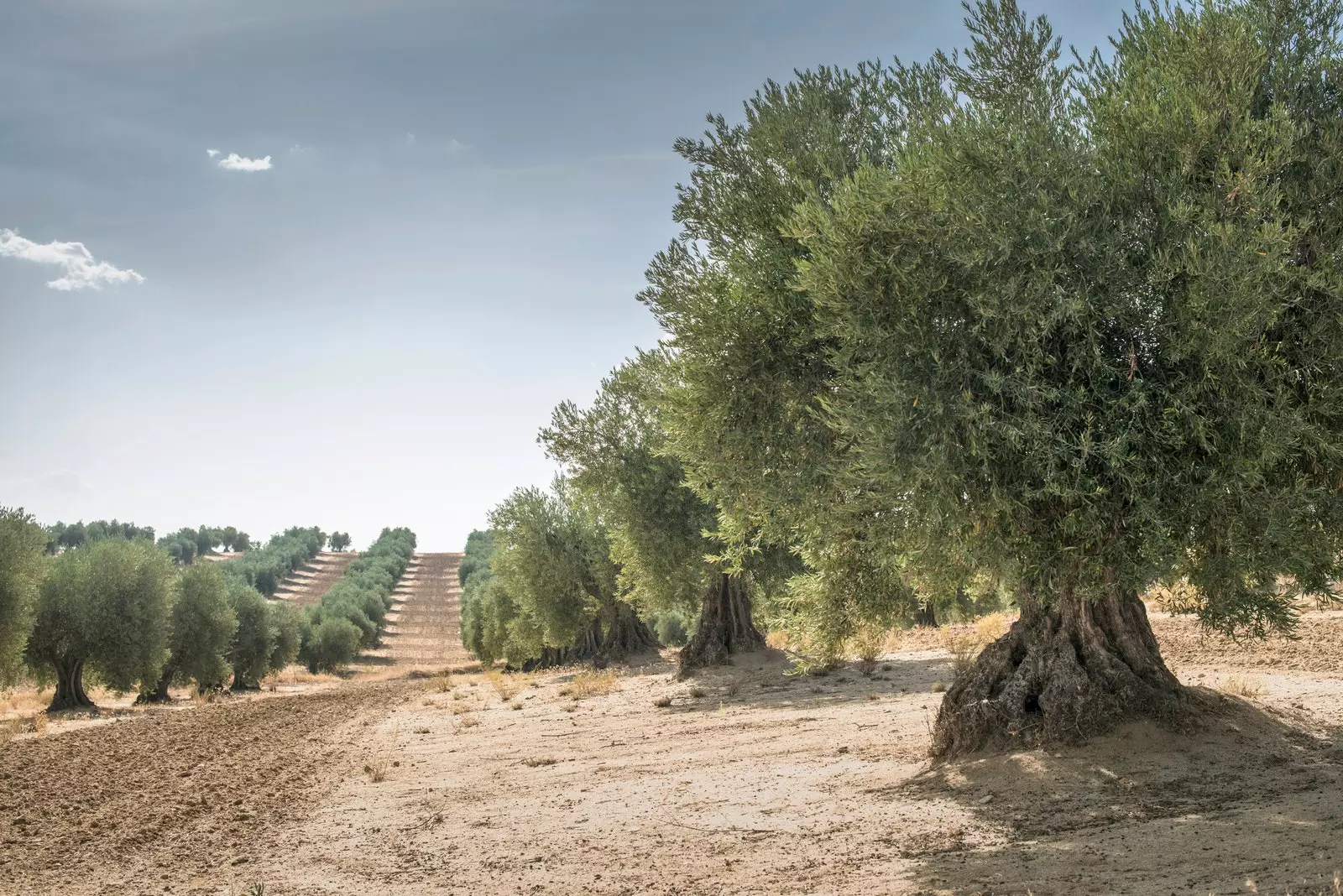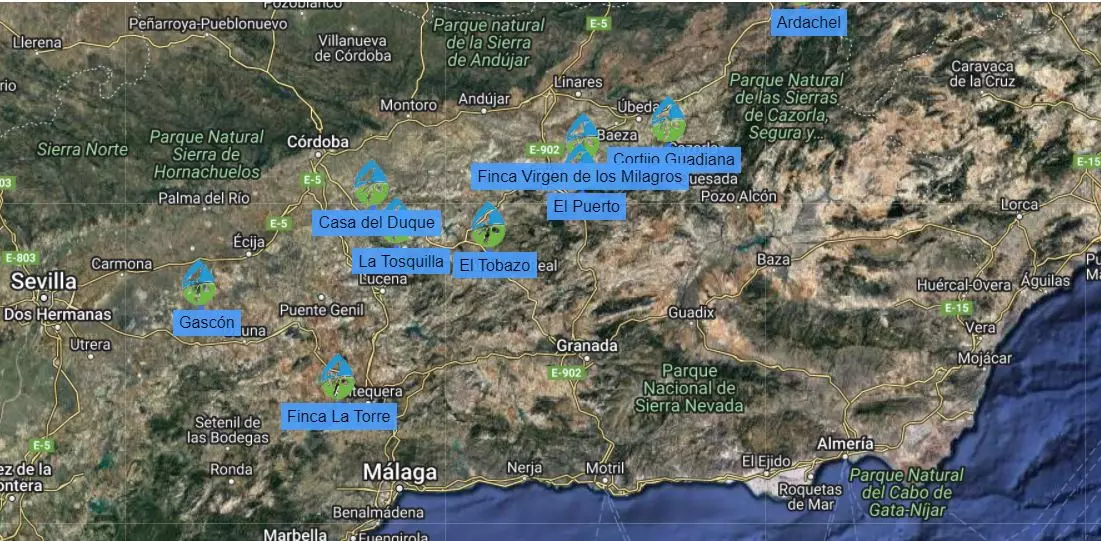The olive grove is part of our history, It is one of the most symbolic trees of the Iberian Peninsula . Romans and Greeks considered it a totemic tree, a symbol of victory, immortality and strength -remember the crowns of olive leaves that the emperors exhibited in the Colosseum-.
Its distribution around the Mediterranean occupies large areas of land, almost 5,000,000 hectares in Europe , of which, slightly more than half are located in Spain. Andalusia It is the region that dedicates the most agricultural area to olive groves with approximately 1,500,000 hectares , being Jaén the province with the highest number of olive trees. However, it was at the end of the 1980s, with the entry of our country into the Common Agrarian Policy, that the olive groves were artificially intensified (with insecticides, herbicides...) to produce more olives.
“This process has taken a heavy environmental toll. , causing the loss of a good part of the biodiversity of the olive grove and causing a profound degradation of its ecosystem services”, they underline from the website of the Alive Olives project.
The economic crisis also aggravates the situation of farmers, so a group of conservationists and researchers decide to work to start up Olivares Vivos, in order to help improve the profitability of olive growers through the recovery of biodiversity , of the added value that was obtained from it and of the differentiation of the EVOO.
“Something that we wanted to achieve through the design and implementation of a new olive growing model that would also use a certification and a seal that would guarantee that the oil that contained it had recovered biodiversity. And all this on a great scientific basis”, they explain to Traveler.es.
The project received great support and, since 2016, has been working with good results. It was first developed in Andalusia, and later, throughout Spain. “Now, with the help of the new LIFE Olivares Vivos, we are going to expand it to the rest of Europe helped by a series of training farms that we are going to set up in the main olive-growing regions of the continent. They will be in Castilla-La Mancha, Community of Madrid, Extremadura, the Valencian Community and Catalonia, in Spain; in the Algarve of Portugal; in Tuscany and Apulia, in Italy, and in Crete and the Peloponnese, in Greece. A first step to, later, extend it to the rest of Europe and, later, also leave it”, they point out.

Olive trees, the heritage of the Mediterranean.
THE RECOVERY OF THE OLIVE GROVE
Why is it so important to preserve the olive grove? As they explain from the project, the olive grove is the main crop in the Mediterranean. “A crop that has evolved for millennia together with the Mediterranean flora and fauna, among other reasons because it was woody, in such a way that it didn't change every year , but it is much more stable than herbaceous plants, for example, and many species have adapted to it, taking advantage of its branches, the holes in its trunks or the certainty that there would not be major alterations around them”.
Without forgetting, of course, all the economic machinery that revolves around the olive grove and the olive oil In our country.
The project, initially carried out on some 20 farms, works on plans based on three elements: good management of the herbaceous cover, restoration of unproductive areas -boundaries, roadsides, patterns, etc.- and the installation of support elements for fauna -so that birds or insects find places to nest, for example-.
With it they were able to show that the number of species of birds, ants, bees and plants increased between 7 and 12%, and their abundance increased by 40%. Also, in the medium term, it was found that an additional 25% could still be recovered.
“With all this data, it has been possible to develop a certification regulation so that, knowing everything we have learned, any olive grower who wants to recover biodiversity on their farms and differentiate their EVOO knows what they have to do and how much biodiversity they must recover ; all this depending on your starting situation, the characteristics of your olive grove and its location. A certification that we are going to start opening now”.
In addition, they have also done marketing studies on the consumer preferences in terms of oil in four countries of the European Union. This is essential to be able to help farmers to sell it. "Now they know how to improve their commercial strategy and improve their profitability even more while we continue to promote the Olivares Vivos seal." Beyond the olive tree, its objective is to extend the project to table olives and vineyards.
See images: The European Trees of the Year 2021

Farms available for routes of live olive groves.
THE VISIT TO THE OLIVE FIELDS
Perhaps the most interesting thing about the project, for those of us who love nature, is knowing that we can visit it and know it first hand . And yes, we can do it, because Olivares Vivos proposes different routes through a good part of the demonstration olive groves, “so that hikers or walkers can walk through them, see how we have worked and enjoy the biodiversity of the olive grove. Visits that can be made throughout the year , given that in any month we are sure to find, for example, farmers working, which is always interesting to see, but it's probably best to do it during the spring , when the flora and fauna that have been hidden during the winter -as they have been in the traditional olive grove due to the management that has been carried out in the majority- become more visible again”.
Through a map we can know the different farms where you can walk and see the whole process, most of them in the south of Spain . Before visiting, they recommend giving notice so that the farmers can provide more details and the visit can be used much more.
PRACTICAL DATA:
E-mail: [email protected]
Telephone: 953 37 31 60
